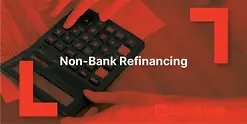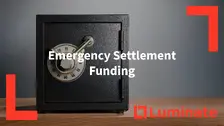Portfolio Refinancing: Solutions for Multi-Property Owners in New Zealand
 By
Trent Bradley
·
8 minute read
By
Trent Bradley
·
8 minute read

You own four investment properties across Auckland and Hamilton. Your portfolio is worth $3.2 million with combined debt of $2.1 million. The properties cash flow positively, you've never missed a payment, and your equity position is strong at 34%. But when you approach your bank to refinance or release some equity for your next purchase, they decline.
Back to Alternative Lending Solutions Guide
Table of Contents
- Key takeaways
- Understanding portfolio refinancing
- Real-world case study: David's four-property portfolio
- When portfolio refinancing makes sense
- Alternatives to portfolio refinancing
- Cost comparison: Portfolio refinancing vs alternatives
- Frequently asked questions
- Ready to refinance your property portfolio?
Key Takeaways
- Portfolio refinancing provides solutions when banks decline to refinance multiple investment properties, even when portfolios perform well with positive cash flow
- Banks increasingly decline multi-property owners due to DTI restrictions (7x income limit), complexity aversion, and rigid servicing tests that ignore actual rental income
- Alternative lenders assess portfolios holistically using actual rental income and cash flow, not just personal employment income like banks do
- Typical portfolio refinancing rates are 9-9.5% with 1% setup fees, creating an 18-month bridge to specialist lenders at 7.8-8.5%
- Portfolio refinancing makes sense when properties are positively geared, LVR is under 70%, and there's a clear refinance pathway within 12-24 months
- Alternative strategies include specialist property investor banks (Resimac, Pepper, Liberty), reducing debt to meet DTI limits, or restructuring using home equity
Their reason? "Your portfolio is too complex. We can't service all these properties under current lending criteria. Your debt-to-income ratio exceeds our limits."
This is the frustrating reality for many multi-property owners in New Zealand. Banks that were happy to lend for your first three properties now won't help with refinancing, even when your portfolio performs well and you're seeking reasonable requests.
Portfolio refinancing provides solutions when banks decline to refinance multiple properties. Whether you need to consolidate loans, release equity, restructure debt, or simply move away from a bank that won't support your growth, these facilities recognise that property portfolios require different assessment approaches than single-property mortgages.
Understanding portfolio refinancing
What is portfolio refinancing?
Portfolio refinancing is the process of replacing existing mortgages across multiple properties with new lending facilities—either with a different bank or with an alternative lender when banks decline. For multi-property owners, this becomes necessary when:
- Current bank won't extend or renew facilities
- Debt-to-income ratios exceed bank limits (typically 7x income)
- Portfolio complexity makes banks uncomfortable
- You want to release equity for next purchase
- Cross-collateralisation creates problems
- Interest rates or terms need improving
Why banks decline portfolio refinancing
Banks have become increasingly conservative with property investors:
| Bank Challenge | Impact on Portfolio Owners | Result |
|---|---|---|
| DTI restrictions | Maximum 7x income across all debt | Decline even with positive cash flow |
| LVR rules | Per-property and aggregate limits | Can't release equity despite overall position |
| Complexity aversion | Prefer simple single-property loans | Decline multi-property applications |
| Policy tightening | Reduced investor lending appetite | Existing customers can't refinance |
| Servicing tests | Use test rates 8-9% | Fail despite actual rates being 6-7% |
The key issue: Banks assess portfolios using residential mortgage criteria designed for owner-occupiers, not investment portfolios. A property portfolio generating $180,000 annual rent might be declined because the owner's personal income is "only" $95,000—even though the portfolio demonstrably services itself.
For property owners facing similar situations with single properties, explore our guide on non-bank refinancing when banks won't extend.
How portfolio refinancing differs
Alternative portfolio refinancing assesses your situation differently:
| Factor | Bank Assessment | Portfolio Refinancing |
|---|---|---|
| Income focus | Personal employment income | Rental income + personal income |
| DTI calculation | All debt divided by personal income | Holistic portfolio serviceability |
| Property assessment | Individual property basis | Portfolio-wide approach |
| Cash flow | Tested at 8-9% rates | Actual cash flow performance |
| Complexity | Avoided | Understood and accommodated |
| Security | Per-property limits | Cross-collateral if beneficial |
Real-world case study: David's four-property portfolio
David Martinez, 44, had built a solid investment portfolio over 12 years while working as an engineering manager earning $145,000 annually.
His portfolio:
- Property 1 (Auckland): $850,000 value, $420,000 mortgage, rent $750/week
- Property 2 (Auckland): $720,000 value, $380,000 mortgage, rent $650/week
- Property 3 (Hamilton): $580,000 value, $310,000 mortgage, rent $520/week
- Property 4 (Hamilton): $640,000 value, $340,000 mortgage, rent $580/week
Total portfolio:
- Combined value: $2,790,000
- Combined debt: $1,450,000
- Portfolio LVR: 52%
- Annual rental income: $127,400
- Annual mortgage costs: $96,200 (at 6.8% average)
- Net positive cash flow: $31,200/year
The bank's position
David's existing bank refused to refinance when his fixed-rate terms expired. They offered variable rates 1.2% higher than their new fixed rates, essentially forcing him out.
Bank's reasoning:
- DTI ratio: $1,450,000 ÷ $145,000 = 10x (exceeds 7x limit)
- "Portfolio too complex for current lending policy"
- "Unable to meet serviceability at test rates"
- Recommendation: "Sell two properties to reduce debt"
David's frustration: "They financed these purchases originally! The properties cash flow $31,000 positive annually. I've never missed a payment in 12 years. Suddenly they want me to sell half my portfolio because their policy changed?"
The Luminate solution
Luminate refinanced David's entire portfolio:
Loan structure:
- Total facility: $1,450,000 across four properties
- Structure: Cross-collateralised portfolio loan
- Interest rate: 9.25% (vs bank's 6.85% but available vs bank's decline)
- Term: 18-month facility with refinance pathway
- Setup fee: $14,500 (1%)
- Legal fees: $4,200 (multiple properties)
Assessment approach:
- Evaluated portfolio holistically, not individual properties
- Assessed actual rental income and expenses
- Recognised 12-year track record
- Portfolio LVR of 52% provided strong security
- Positive cash flow demonstrated serviceability
Monthly costs comparison:
- Bank rates (if available): $8,266/month at 6.85%
- Luminate rates: $11,187/month at 9.25%
- Additional monthly cost: $2,921
18-month refinance plan:
- Maintain portfolio for 18 months
- Build additional rental history
- Pay down debt by $50,000 from cash flow
- Approach non-bank lenders with portfolio expertise
- Refinance to specialist property investor lender at 7.8-8.5%
David's perspective: "Paying an extra $2,900/month is painful, but the alternative was selling properties at the wrong time. My portfolio still generates positive cash flow even at 9.25%. The 18 months gives me time to find a lender who understands investment portfolios, not just residential mortgages."
The outcome
- 18 months later: Refinanced to specialist property lender at 8.2%
- Total cost premium: $52,578 (18 months at higher rate plus fees)
- Properties retained: All four properties
- Property appreciation: Portfolio increased $310,000 in value over 18 months
- Equity gained: $360,000+ including appreciation and debt reduction
- Result: Cost of $52,578 to protect and grow $360,000+ in equity position
David's success demonstrates how short-term higher-cost financing can protect long-term wealth. For situations requiring even faster solutions, see our guide on emergency settlement funding.
When portfolio refinancing makes sense
✓ You should consider this option when:
1. Your bank won't refinance existing portfolio
Banks change policies frequently. Even excellent customers find themselves unable to refinance when:
- DTI rules tighten (7x limit implemented recently)
- Investor lending appetite reduces
- Internal policy changes affect existing customers
- Your portfolio growth exceeded bank comfort levels
2. Portfolio performs well but exceeds DTI limits
The numbers work in reality but not in bank calculators:
- Positive cash flow across portfolio
- Strong payment history
- Good LVR position (under 65-70%)
- Rental income demonstrates serviceability
- Personal income appears "insufficient" by bank metrics
3. You need equity release for next purchase
Your portfolio has equity available but banks won't release it:
- Planning next investment purchase
- Need deposit for additional property
- Portfolio LVR allows equity release
- Banks decline due to DTI or complexity concerns
- Need deposit for additional property (consider residential bridge loans if timing is tight)
4. Cross-collateralisation creates problems
Your properties are cross-collateralised and you need to:
- Sell one property but bank won't release
- Restructure security arrangements
- Separate properties for estate planning
- Free up specific property for sale or transfer
5. You're moving to specialist property lender
Using alternative refinancing as bridge to specialist:
- Building track record for specialist lender
- Timing not right for specialist lender yet
- Need immediate solution while arranging specialist finance
- Specialist lender requires additional history or debt reduction
✗ This may not be suitable when:
1. Properties are negatively geared significantly
If portfolio loses substantial money monthly:
- Even at bank rates, portfolio is unsustainable
- Higher alternative rates make situation worse
- Fundamental issue is property performance, not just financing
- May need to reconsider portfolio composition
2. You have other refinancing options available
Before using alternative refinancing, exhaust other options:
- Try multiple banks (policies vary significantly)
- Specialist property investor banks (Resimac, Pepper, Liberty)
- Reduce debt to meet DTI requirements
- Restructure portfolio to simplify
- Use equity in owner-occupied property
3. LVR position is already stretched
Higher rates make high-LVR portfolios riskier:
- Portfolio LVR over 70% creates stress at higher rates
- Limited equity buffer if values decline
- Refinance pathway becomes harder
- Consider debt reduction first
4. No clear exit strategy
Alternative portfolio refinancing needs an exit plan:
- Path to specialist lender
- Debt reduction plan
- Property sale strategy
- Timeline and milestones clear
Back to Alternative Lending Solutions Guide
Alternative 0: Emergency settlement if deadline is imminent
If your loan expires within 30 days and refinancing takes too long, consider emergency settlement funding to buy time while arranging proper portfolio refinancing.
Alternatives to portfolio refinancing
Alternative 1: Specialist property investor banks
For property developers with portfolios under construction or requiring selldown funding, see our specialized guide on development bridge loans.
Before alternative lenders, try specialist banks who understand investors:
Specialist lenders include:
- Resimac
- Pepper Money
- Liberty Financial
- Avanti Finance
Advantages:
- Lower rates than alternative lenders (7.5-8.5% typical)
- Understand property portfolios
- More flexible DTI assessment
- Portfolio lending expertise
Requirements:
- Usually want 2+ properties
- Prefer established portfolios
- Still have DTI limits (but higher—up to 10x)
- Good payment history essential
Alternative 2: Reduce debt to meet bank DTI
If your DTI is slightly over bank limits:
Strategies:
- Pay down debt from savings
- Use cash flow to reduce principal
- Sell underperforming property
- Wait while making extra payments
Calculation example:
- Current debt: $1,450,000
- Income: $145,000
- DTI: 10x (exceeds 7x limit)
- Need to reduce debt by $435,000 to reach 7x
- Could sell one property to achieve this
Alternative 3: Restructure using equity in owner-occupied property
If you have equity in your family home:
Strategy:
- Separate owner-occupied from investment lending
- Use home equity for investment deposit
- May improve DTI calculation
- Can access better owner-occupied rates
Caution: Putting family home at risk for investment portfolio
Alternative 4: Stagger refinancing
Instead of refinancing entire portfolio:
Approach:
- Refinance properties with expiring terms only
- Maintain existing loans where rates acceptable
- Gradually restructure over time
- Reduces immediate financing need
Cost comparison: Portfolio refinancing vs alternatives
Scenario: $1,500,000 portfolio debt refinancing
Option A: Alternative Portfolio Refinancing (18 months)
Costs:
- Setup fee (1%): $15,000
- Legal fees (4 properties): $4,500
- Interest premium (9.25% vs 6.85%): $54,000
- Total 18-month cost: $73,500
Benefits:
- Keeps portfolio intact
- Time to arrange specialist lender
- Maintains property appreciation exposure
- Preserves long-term strategy
Option B: Sell One Property to Meet Bank DTI
Costs:
- Real estate fees (3.5%): $24,500 (on $700k property)
- Legal fees: $2,500
- Lost future appreciation: $50,000+ (estimated)
- Lost rental income: $35,000/year
- Total cost: $75,000+ plus ongoing opportunity cost
Benefits:
- Access bank rates on remaining portfolio
- Simplified structure
- Lower debt load
Option C: Specialist Property Investor Bank
Costs (if accepted):
- Application/setup: $3,000-$5,000
- Interest rate: 7.8-8.5% (premium of 1-1.5% vs banks)
- Ongoing cost: ~$1,125-$1,875/month premium
- 18-month cost: $23,250-$38,750
Benefits:
- Lower than alternative lender rates
- Longer-term solution
- Portfolio lending expertise
- May not accept complex situations
Frequently asked questions
How quickly can portfolio refinancing be arranged?
Typically 15-25 business days for multiple properties. More complex than single property due to multiple valuations, titles, and security arrangements. Start process 6-8 weeks before existing loan terms expire if possible.
Do all properties need to be cross-collateralised?
Not necessarily. Structure depends on your situation. Cross-collateralisation can provide better rates but reduces flexibility. We assess what structure best suits your goals and circumstances.
What's the maximum LVR for portfolio refinancing?
Typically up to 70% portfolio LVR. Some situations up to 75% if portfolio performs exceptionally well. Lower LVRs (under 65%) get better pricing. Portfolio assessment is holistic, not per-property.
Can I release equity during portfolio refinancing?
Yes, if portfolio LVR allows. For example, if portfolio LVR is 50%, you could potentially refinance and release equity up to 65-70% LVR, freeing up 15-20% of portfolio value for next purchase or other purposes.
What if my properties are with different banks?
Not a problem. Portfolio refinancing can consolidate loans from multiple banks into single facility. This often simplifies administration and may improve overall terms despite higher rates.
Q: How do you assess rental income?
We look at actual rental income (via tenancy agreements and bank statements), property manager statements, and market rental assessments. We typically use 75-80% of rental income in serviceability calculations to account for vacancies and maintenance.
What's the path to refinancing back to banks or specialists?
Most portfolios refinance to specialist property lenders within 12-24 months. Requirements typically include: demonstrated payment history, portfolio DTI improved to 8-9x, maintained or improved LVR position, and continued positive cash flow. We help plan this pathway from day one.
Can I add properties during the facility term?
Generally yes, depending on facility structure and overall portfolio LVR. Adding properties may require facility variation and additional security assessment. Discuss growth plans during initial application to structure appropriately.
Ready to refinance your property portfolio?
Multi-property portfolios require specialist lending expertise that understands investment property economics. Contact Luminate Financial Group to discuss how our portfolio refinancing solutions can help when banks decline.
📞 Call 0800 333 400
📧 Email askus@luminate.co.nz
🌐 Visit luminate.co.nz

Trent Bradley
Trent Bradley is a New Zealand financial advisor specializing in property-backed finance and investment consulting. With over 26 years of experience running his mortgage broking business, he has helped wholesale investors access high-yield property-backed loan opportunities. For the past 12 years, Trent has led Luminate Finance, a New Zealand finance company dedicated to connecting investors with secure property investment solutions.










